10 Transformative Wardrobe Swaps for a Lighter Environmental Fashion Footprint
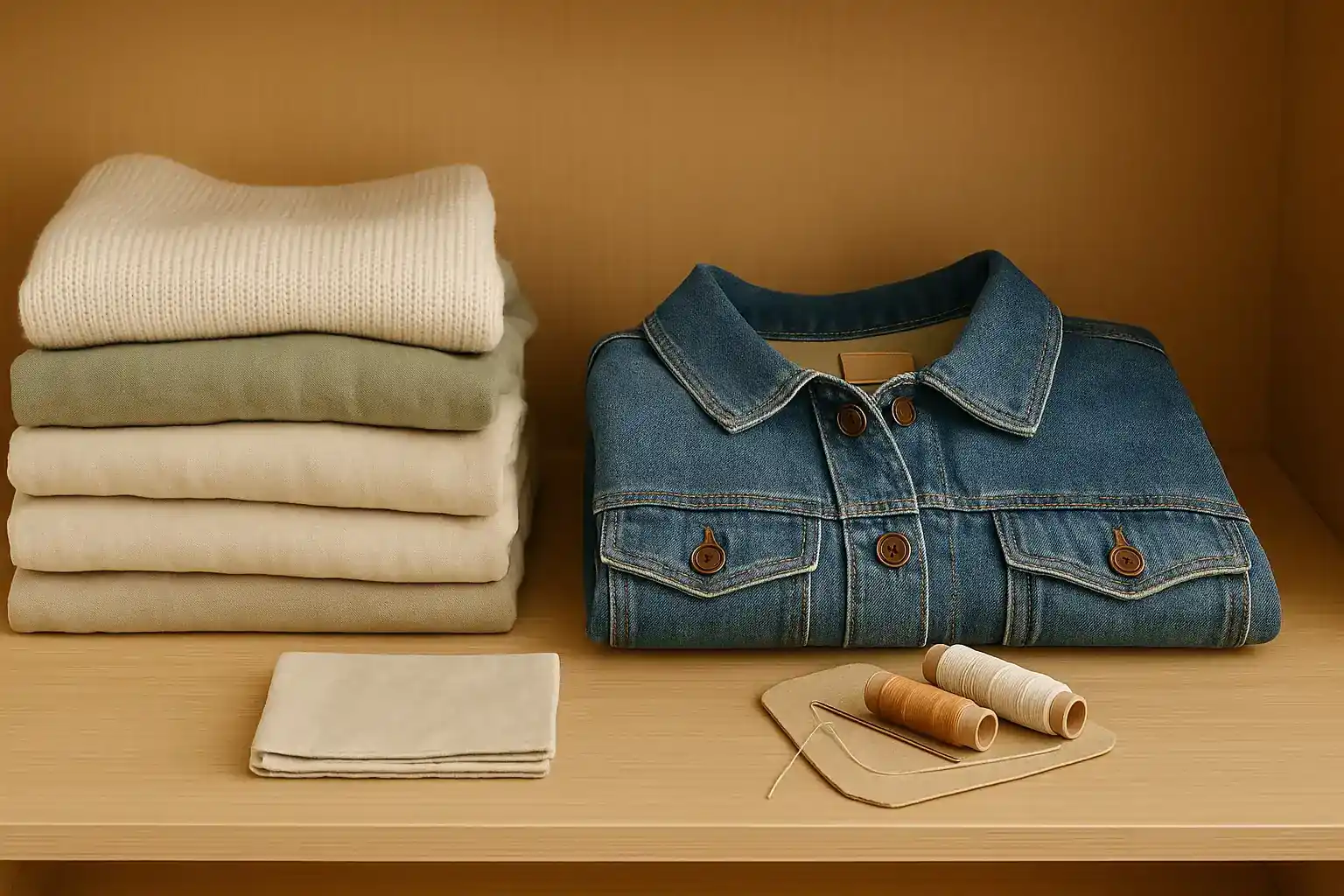
The clothes we choose to wear are more than just personal expressions of style; they are intrinsically linked to global supply chains, resource consumption, and environmental impact. The traditional model of the fashion industry, often characterized by rapid production and disposal, has created a significant burden on our planet. From depleting precious water resources and polluting ecosystems to generating vast amounts of waste, the environmental footprint of fashion is a pressing concern in today's world.
However, the power to change this narrative lies, in part, with us, the consumers. By making conscious decisions about how we acquire, use, and discard our clothing, we can collectively shift towards a more sustainable paradigm. Embracing environmental fashion is about understanding the impact of our choices and actively seeking out alternatives that minimize harm and promote responsibility. It's about building a wardrobe that not only makes you look good but also makes you feel good about your contribution to a healthier planet.
Making a meaningful impact doesn't necessarily require drastic overnight changes. Instead, it's about adopting new habits and making informed swaps in your approach to fashion consumption. These small, deliberate changes, when adopted by many, can lead to a significant reduction in the overall environmental footprint of the fashion industry.
If you're ready to explore how your wardrobe can become a force for positive change and contribute to a lighter environmental fashion footprint, here are 10 transformative swaps you can start integrating into your lifestyle:
Transform Your Wardrobe: 10 Swaps for a Greener Impact
1. Swap Fast Fashion Consumption for Sustainable Brands:
- Why it Matters: Fast fashion brands operate on a model of rapid trend cycles and high-volume, low-cost production. This often involves resource-intensive manufacturing processes, reliance on cheap synthetic materials derived from fossil fuels, and a lack of transparency regarding environmental practices and labor conditions. The constant push for newness encourages overconsumption and quickly renders items obsolete.
- How to Make the Swap: Consciously shift your purchasing power towards brands that are transparent about their environmental commitments and social responsibility. Look for companies that use sustainable materials, employ ethical manufacturing practices, invest in reducing their carbon footprint, and are open about their supply chains. Research brands online, check for certifications (like GOTS, Fair Trade, B Corp), and read their sustainability reports. While these items might have a higher upfront cost, they are often better quality and designed to last, reducing the need for frequent replacement.
2. Swap Buying New for Embracing Secondhand:
- Why it Matters: Producing new clothing consumes significant resources – water, energy, chemicals, and raw materials. By choosing secondhand, you are essentially diverting a garment from potentially ending up in a landfill and extending its lifespan. This directly reduces the demand for new production and the associated environmental impacts. It's one of the most direct ways to participate in environmental fashion.
- How to Make the Swap: Make secondhand shopping a regular part of your routine. Explore local thrift stores, vintage boutiques, and consignment shops for unique finds. Utilize online platforms and apps dedicated to buying and selling pre-owned clothing. Don't be afraid to look for items that might need minor alterations or repairs; giving them a new life can be incredibly rewarding and sustainable.
3. Swap a Disposable Mindset for Valuing Longevity:
- Why it Matters: Fast fashion has unfortunately fostered a culture of disposability, where clothing is seen as temporary and easily replaceable. This leads to garments being worn only a few times before being discarded, contributing to the massive problem of textile waste. A focus on longevity combats this by emphasizing the value and lifespan of each item.
- How to Make the Swap: Shift your perspective from quantity to quality. When purchasing, consider the garment's construction, the durability of the material, and whether it's a timeless piece you'll want to wear for years, not just one season. Invest in well-made basics and classic styles that can be mixed and matched. Think about the "cost per wear" – a higher-priced, durable item worn many times is ultimately cheaper and more sustainable than a cheap item worn only a few times.
4. Swap Impulse Purchases for Mindful Planning:
- Why it Matters: Unplanned, impulse buys often lead to purchasing items you don't truly need or that don't integrate well into your existing wardrobe. These items are more likely to remain unworn and eventually contribute to textile waste. Mindful planning ensures your purchases are intentional and valuable additions.
- How to Make the Swap: Before buying any new clothing, take time to evaluate your current wardrobe, identify actual gaps, and consider what you truly need. Create a shopping list if necessary. Ask yourself critical questions: Do I love this item? Does it fit well? Will I wear it often? Does it go with at least three other things I own? This considered approach is fundamental to responsible environmental fashion.
5. Swap Conventional Fabrics for Eco-Conscious Materials:
- Why it Matters: The production of many conventional fabrics like standard cotton and polyester has significant environmental downsides, including high water usage, pesticide pollution, and reliance on fossil fuels. Choosing materials with a lower environmental impact is a direct way to reduce your footprint at the source.
- How to Make the Swap: Check garment labels for fabric composition. Prioritize natural fibers like organic cotton (grown without harmful chemicals and often with less water), linen and hemp (durable, require minimal water and pesticides), and certified sustainable wood-based fibers like Tencel™ Lyocell (produced in environmentally responsible ways). Also, look for recycled fabrics made from pre- or post-consumer waste, giving existing materials a new life.
6. Swap Discarding Damaged Clothes for Repairing and Mending:
- Why it Matters: A hole, a tear, or a broken zipper shouldn't necessarily mean the end of a garment's life. Discarding easily repairable items contributes unnecessarily to textile waste. Learning to repair or finding someone who can is a valuable skill in environmental fashion.
- How to Make the Swap: Learn basic mending techniques like sewing on a button, fixing a seam, or patching a small hole. Explore local tailors or alteration shops for more complex repairs. Some brands are also starting to offer repair services for their garments. Embrace visible mending as a creative and sustainable statement.
7. Swap Ownership for Access Through Renting or Swapping:
- Why it Matters: Not every garment needs to be owned outright, especially items for specific occasions or styles you only want to wear a few times. Rental and swapping models reduce the need for individual ownership and increase the utilization rate of existing clothing, lowering the overall demand for new production.
- How to Make the Swap: Explore online and local clothing rental services for occasion wear or trendy pieces. Organize clothing swap parties with friends where you can exchange items you no longer wear but are still in good condition.
8. Swap the Tumble Dryer for Air Drying:
- Why it Matters: Tumble dryers are energy-intensive appliances that contribute significantly to household energy consumption and associated carbon emissions. High heat can also be harsh on fabrics, reducing the lifespan of your clothing.
- How to Make the Swap: Whenever possible, air dry your clothes on a clothesline or drying rack. This simple swap saves energy, reduces your environmental footprint, and is gentler on your garments, helping them last longer.
9. Swap Conventional Laundry Products for Eco-Friendly Options:
- Why it Matters: Many conventional laundry detergents and fabric softeners contain chemicals that can be harmful to aquatic ecosystems once they enter waterways. These chemicals can persist in the environment and impact marine life.
- How to Make the Swap: Opt for biodegradable, plant-based, and environmentally certified laundry detergents and fabric softeners. Look for products with minimal packaging or choose detergent sheets or pods to reduce plastic waste. Washing clothes in cold water also saves energy and is better for most fabrics.
10. Swap Landfill Disposal for Responsible End-of-Life Solutions:
- Why it Matters: A vast majority of discarded textiles end up in landfills, contributing to waste and potential environmental pollution. Ensuring your clothes have a proper end-of-life destination that prioritizes reuse or recycling is a crucial part of environmental fashion.
- How to Make the Swap: Donate wearable clothing to local charities or shelters. For items that are too worn or damaged to be worn again, look for textile recycling programs in your community. Many brands and retailers also offer take-back programs for recycling old clothes.
Embracing environmental fashion through these wardrobe swaps is a journey of conscious choices and developing new habits. Each swap you make contributes to reducing the demand for harmful practices and supports a more sustainable future for the fashion industry. By thinking critically about your clothing and making deliberate decisions, you can significantly lighten your fashion footprint and wear your values with pride. Start with the swaps that resonate most with you and gradually integrate more sustainable practices into your everyday life.
Related Blogs
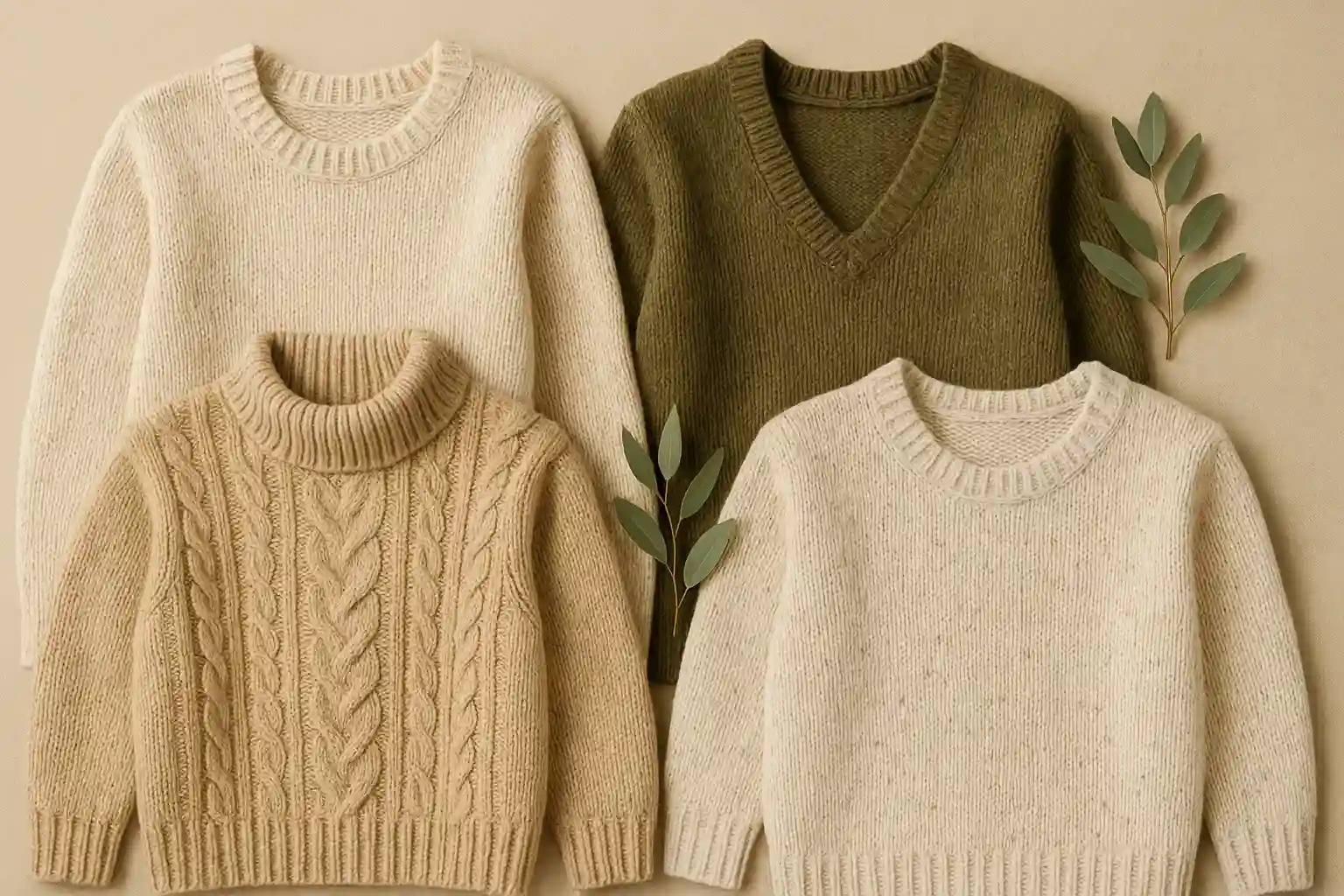
Wrap Yourself in Responsibility: Choosing Sustainable Alternatives to Acrylic Sweaters
Upgrade to durable and breathable wool (certified farms), alpaca, or Tencel-blend knits.
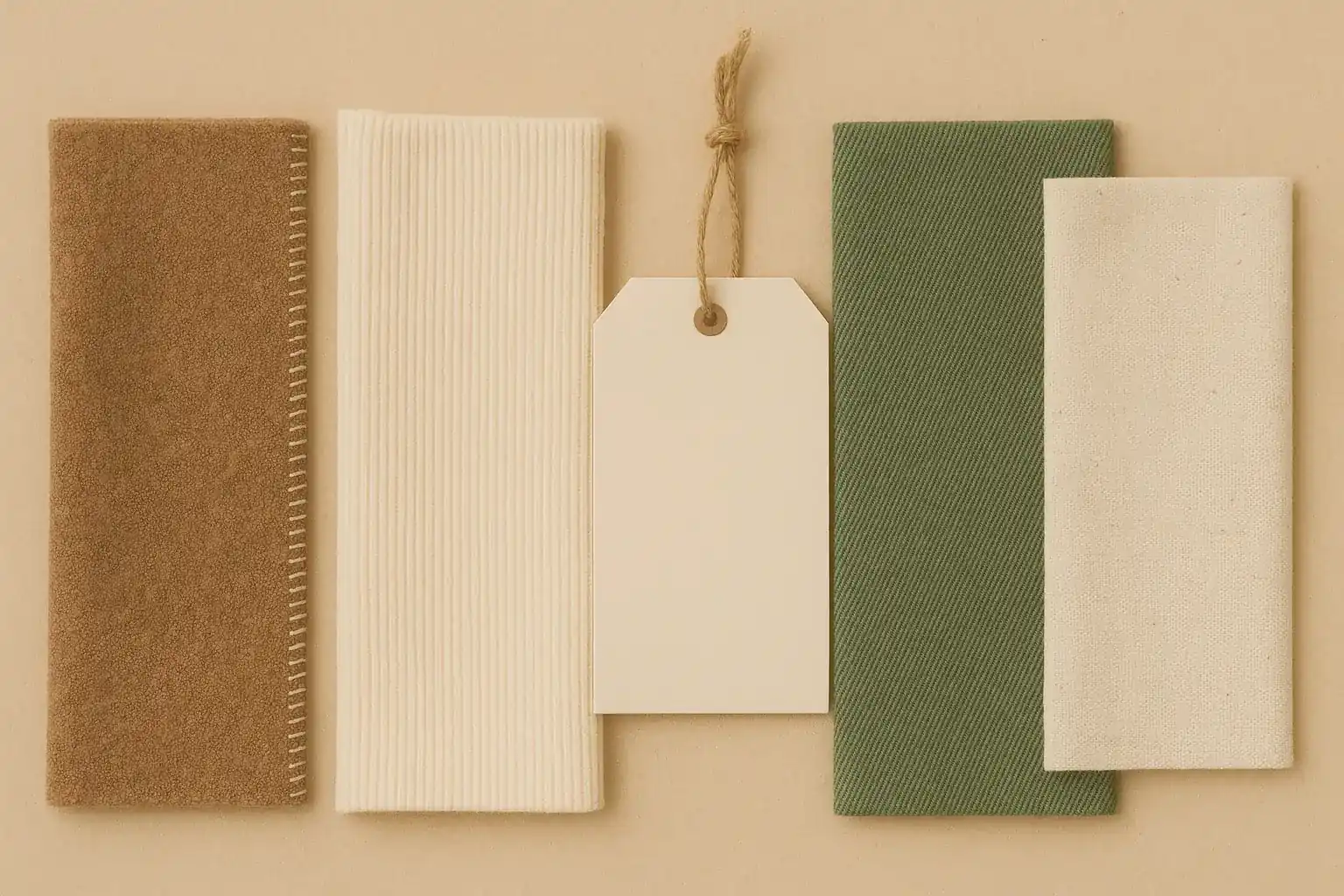
Decoding Fabric Labels: What's Really Sustainable?
Insights on decoding fabric labels in a sustainable way.
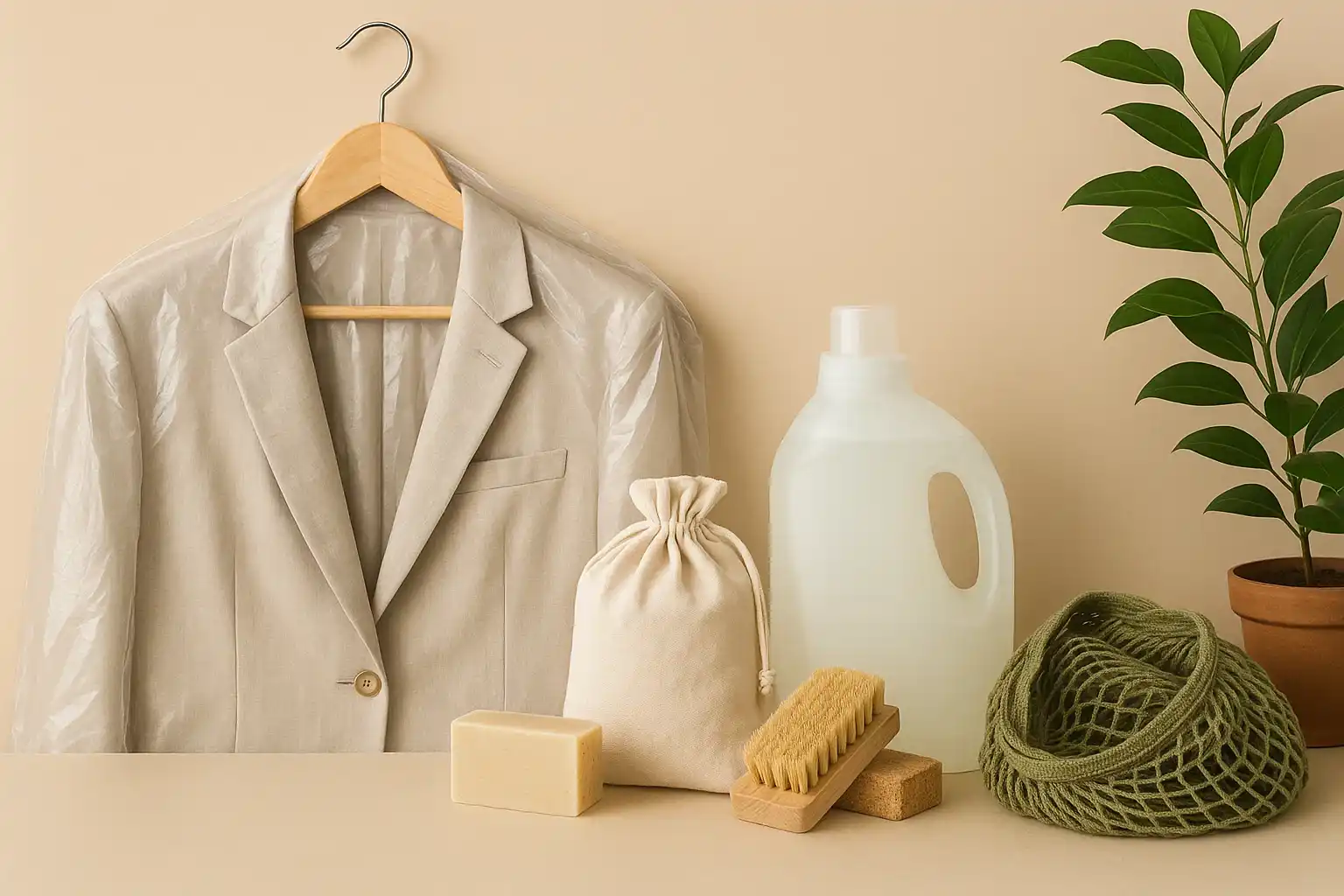
Outsmarting the Dry Cleaner: Choosing Machine Washable Naturals for a Toxin-Free Wardrobe
Avoid toxic PERC solvents by opting for machine washable organic cotton and linen clothing.

Step Lightly: Choosing Sustainable Alternatives to Nylon Stockings
Opt for recycled nylon, biodegradable, or ladder-resistant hosiery for longer wear and less waste.

Fastening the Future: Choosing Sustainable Alternatives to Plastic Buttons
Opt for biodegradable coconut shell, corozo, or wood buttons for eco-conscious clothing.
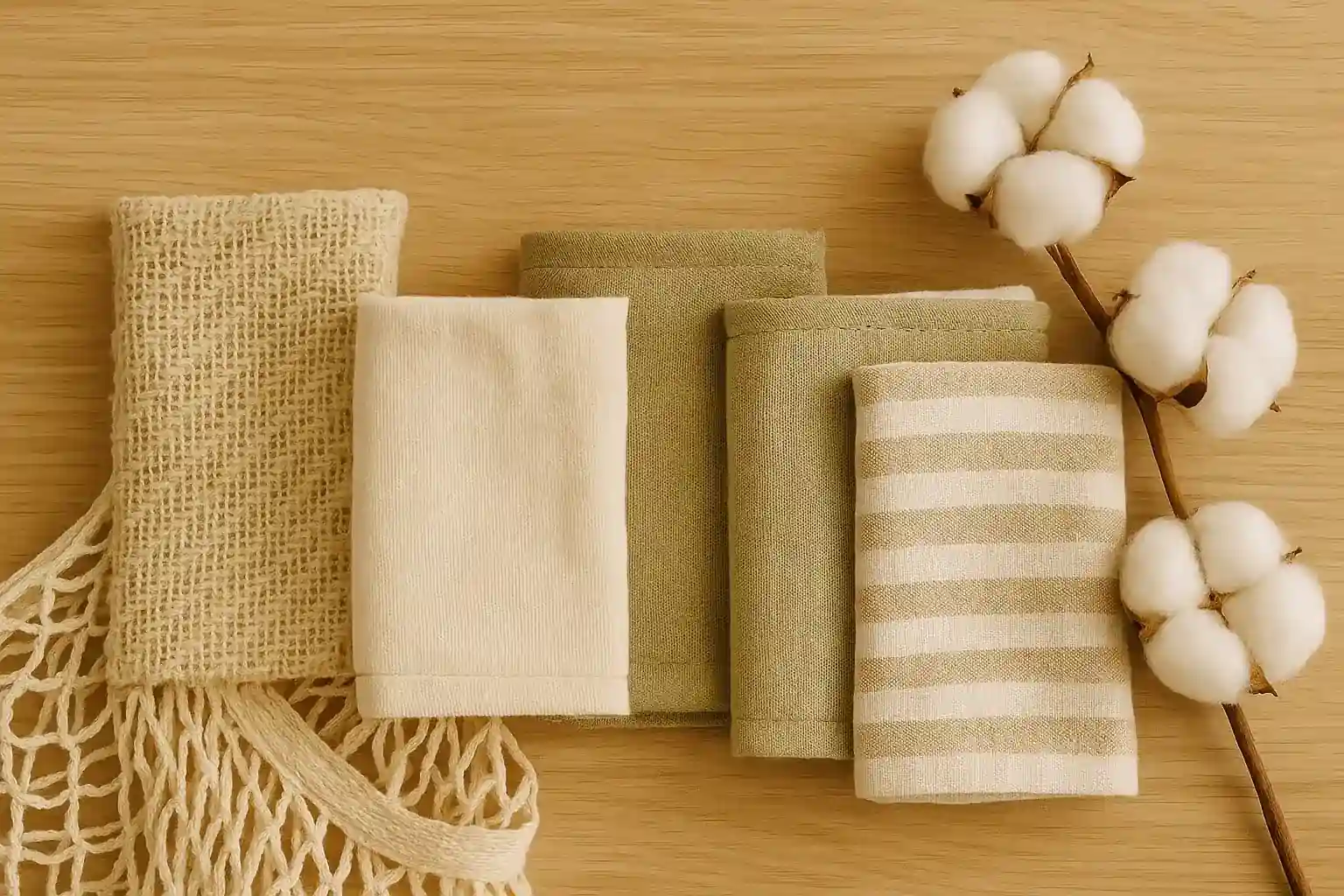
Eco-Friendly Fabrics 101: What to Look For
A beginner’s guide to identifying sustainable & low-impact fabrics.
Stay in the Loop
Get tips and insights tailored to your interests — no spam, just sustainability.